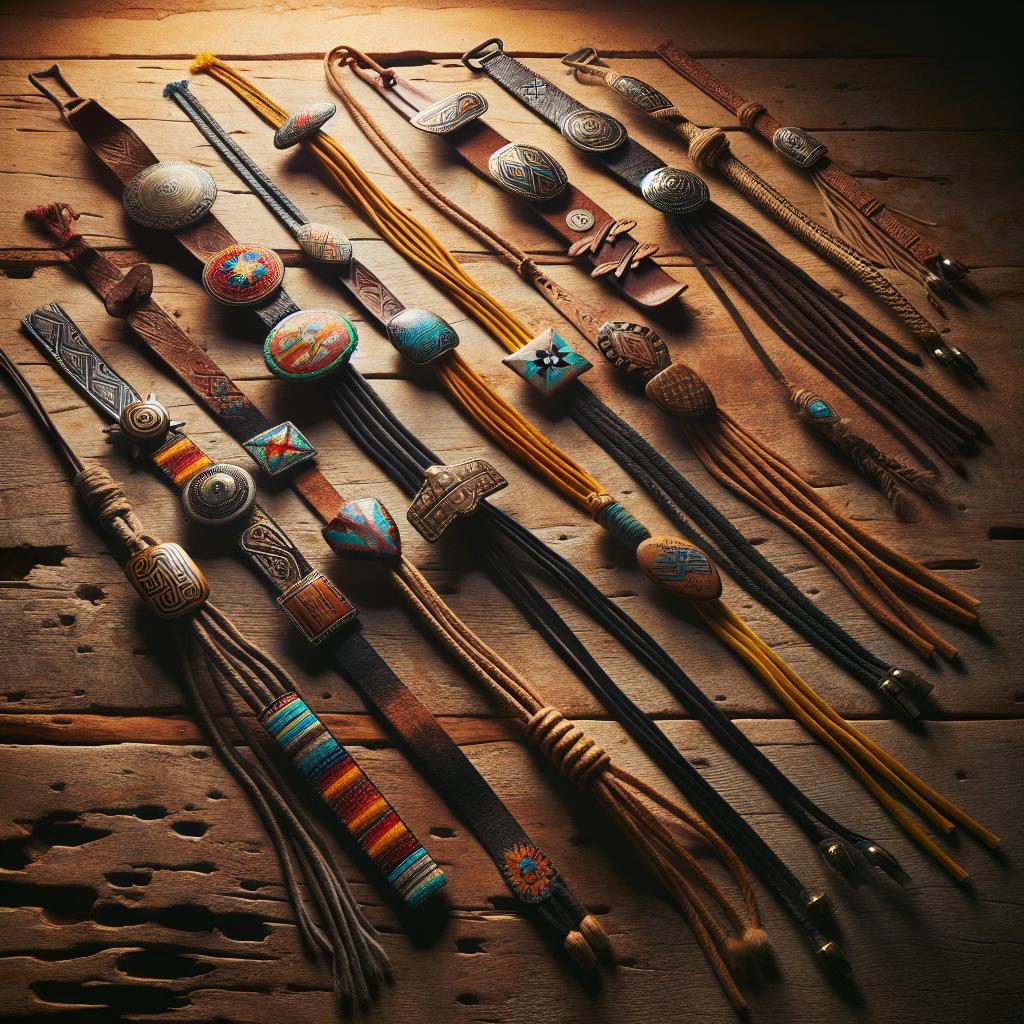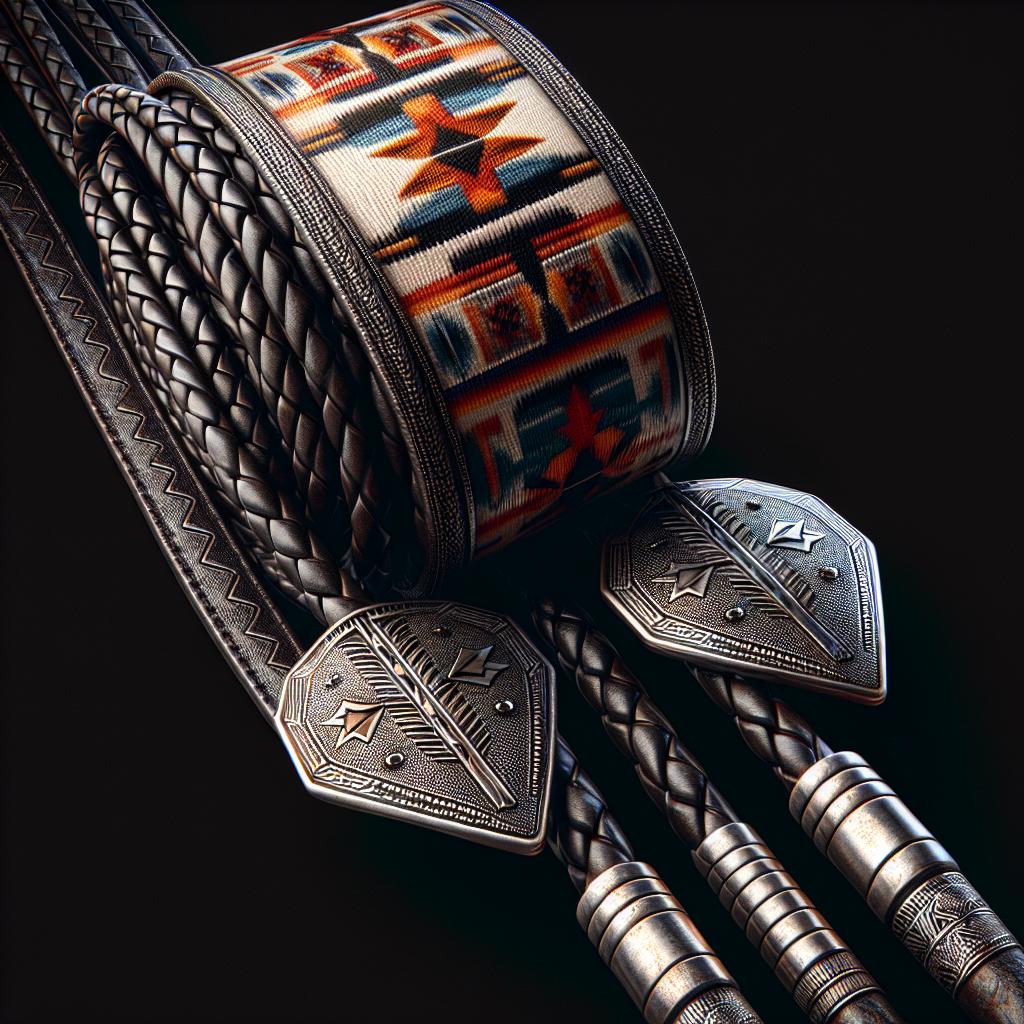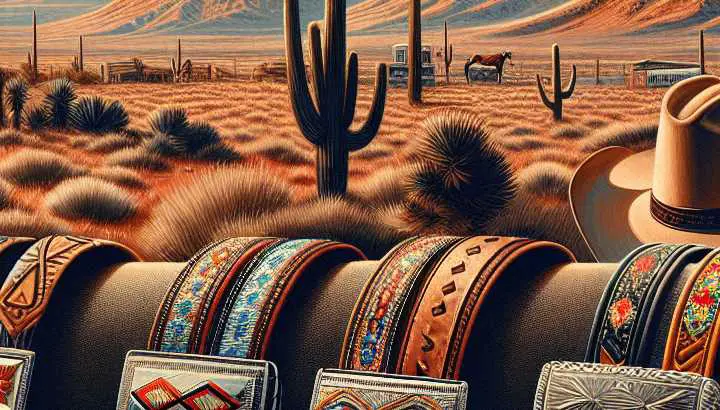The Evolution of Bolo Ties in the Southwest

Origins and historical significance of bolo ties in the Southwest
Every generation has its style revolution. The 1960s had bellbottoms, the 1980s had neon colors, and the 1990s had baggy jeans. Yes, each era had a stylish quirk that defines its fashion. But one mode that never ceases to create a statement is the bolo tie, a unique time traveler from the 19th-century Southwest. Meet the bolo tie: always ready for a rodeo, first date, wedding, job interview, or a mid-October picnic—this versatile accessory never out of season.
Origins of Bolo Ties: The High Plains Drifter Meets Jewelry
So, where does the bolo tie really come from? The Southwest, the land of impressive sunsets, potent peppers, and landscapes artist Georgia O’Keeffe couldn’t resist painting. It wasn’t born in a prestigious Parisian fashion house but on the windswept American frontier. It’s a blend of Spanish colonial flourish, Native American artistry, and good ol’ cowboy improvisation.
The name “bolo” is an adulteration or, if you’re feeling sophisticated, a “linguistic remix” of the word “boleadora”, an Argentine lasso. This zesty South American touch got influenced by the silver concho designs of Spanish settlers and eventually took the familiar form we know today.
Historically, the bolo tie was initially a practical accessory, a casual way of keeping neckwear from flapping about while cowboys rode their trusty steeds. It was like a conservative choker for the cowboy set—functional, dignified, and looking good in rough weather. But as with most things cool and somewhat subtle, it didn’t take long before it started popping up in more fashionable circles.
Bolo Ties in Art and Culture: From Rodeo Kings to Rockstars
The bolo tie’s cultural explosion can be credited largely to one man, a Zuni metalsmith named Leekya Deyuse, who in the 1930s fashioned a version with colorful stones and silver.
“Marching with the Indians, egging them on, and sometimes vying with them in their cruel practices, were scores of French _voyageurs_ and settlers, and even many young officers from the regular forces; whilst behind these leaders, stimulating them with promises of land, and aiding them with money, guns, and powder, were the authorities living in Quebec”
~ F. S. Brereton, How Canada was Won
Celebrities like western crooner Roy Rogers and blond bombshell Marilyn Monroe jumped on the bolo bandwagon, and the rest is history.
In the decades to follow, the bolo tie became a symbol for rugged individualism and wild-west tenacity. It evolved from being just a cowboy’s best friend to becoming a depiction of rebellious cool. Can anyone deny that rising from horse saddle to rock ‘n roll stage does not an icon make?
Then we enter the fabulous era of 1970s rock and come face-to-face with a man known as the “King.” Not to be confused with royalty of the British sort, this “King” preferred fried peanut butter and banana sandwiches over cucumber tea sandwiches. That’s right, we’re talking about THE Elvis Presley. Elvis took the bolo tie and cranked the volume up to 11, turning it into a symbol of his own unique flamboyance.
Modern Bolo Ties and Their Ongoing Legacy
The bolo tie has persevered and continues to stumble irreverently through pop culture, climb up and down the hills of high fashion, and keep necks stylishly snug in the chilly wind across countless high school proms.
And guess what? Tucson recognized bolo tie’s enduring charm and in 1971, designated it the official neckwear of Arizona. That’s right. It’s not just cool; it’s officially recognized state-level cool.
So, whether you’re ranching cattle, paving the pathways of fashion or gracing the stage, there’s something complete in the rugged simplicity of the bolo tie. After all, bolo ties have a story to tell, a tale of centuries-old traditions, the open Southwest, and stand out fashion. So next time you’re doubting what to put on, why not add a smidgen of peculiar charm to your outfit and go bolo?
Read More Here: Origins And Historical Significance Of Bolo Ties In The Southwest

Influence of Native American cultures on bolo tie design
Title: An UnBOLOviable Encounter: The Native American Influence on Fashion’s Zaniest Neckwear
Bolo ties are the rebels of the neckwear universe. The James Deans of the accessory world – and no, we’re not talking the sausage links. This quirky piece of neckwear is as synonymous with the American Southwest as a bowl of spicy chili – minus the heartburn. It maintains a steadfast presence, jazzing up outfits from the Southern plains to the desolate desert lands. Who do we owe this innovative invention to? Some visionary Don Draper-type figure lounging in a mid-century Madison Avenue office? An eccentric Italian fashion designer during an espresso-fueled brainstorm? Incorrect! It’s feather-headdress tip towards the indomitable spirit of Native American couture.
Before we dive into the stunning influences Native American cultures have had on bolo tie designs, we have a quick fun fact for you. Did you know that in the sun-baked, cactus-laden state of Arizona, the bolo tie is the official state neckwear? If you’re planning a trip to the Grand Canyon state, forget your Windsor knot and pack your bolo.
Our story starts centuries ago, with Native American tribes turning mundane objects into multifaceted accessories with a mix of craft and magic. Bolo ties, or bola ties as they are also called, first graced Native American necks as practical adornments. They used the regular bola – a tying device with chords and weights- to hold their clothing together in the wind-blown desert awhile embodying the aesthetic spirit of their rich cultures.
Thus, the bolo was born. Not just an accessory but also a canvas for storytelling.
Fast-forward to modern times, where creativity hasn’t waned but grown, intertwining with history and mythology.
“Fortunately, class distinction in our country was not, at that time, so rigid as to hamper absolutely the amalgamation of different classes, and a certain type of culture, which had for a time been but a speciality of one particular class, soon ceased to be so, and was extended to the other classes, and the process necessarily led to the fusion of all the cultures of different types”
~ Katsuro Hara, Japan
Bolo ties have become pivotal exemplars of self-expression, taking traditional themes from Native American cultures and adapting them into contemporary fashion.
These themes often combine elements from various tribal influences, portraying middle-earthly depictions of a rattlesnake ready to strike or a galloping wild stallion, a sacred Dreamcatcher or the mystical Kachina dolls. They provide a platform for Native American artisans to showcase their skill and artistic prowess.
Take the Navajo tribe, for instance, known for their exceptional silver workmanship and intricate stone inlays. Their unique turquoise-infused designs highlight natural elements and ancestral spirits, nodding to legends and folklore. Bolo sitting on a business shirt becomes a statement piece declaring, “I could be in a boardroom or riding a bucking bronco, depending on how this coffee works.”
On the other hand, Zuni tribe bolos often showcase detailed animal or plant figures, as well as powerful iconography like the celestial Sunface. A Zuni bolo tie is just the gear to transform an everyday grocery run into a divine expedition towards kale and canned soups.
So the next time you spot a bolo tie while taking a stroll through your local flea market or browsing through an online vintage store, take a moment to admire it as a testament to Native American creativity, perseverance, and culture. But remember, if you choose to dawn this Southwestern piece of art, wear it with pride, poise, and remind yourself – loyalty to the bolo requires no traditional tie ever feels the caress of your neck again. Yes, it’s that serious. Now how’s that for a piece of fashionable history you can wear?
Enjoyed This? Here’s More: Influence Of Native American Cultures On Bolo Tie Design
